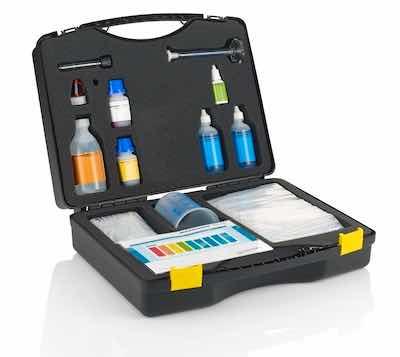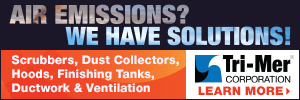“If you compare the cost of running and maintaining a wet cleaning bath — as opposed to that of a vacuum solvent cleaner — I think you’d be astonished.”
This observation, made by the Regulatory Compliance Manager of an aerospace fastener business in the UK, highlighted one reason why his company chose modified alcohol as a direct replacement for Trichloroethylene (TRIC), a relatively new but an increasing trend in the aviation sector.
For years the company had been using TRIC for the high precision cleaning of its fastening systems in two vacuum closed cleaning machines. Given that the use of TRIC in surface cleaning would no longer be permissible by 2020 (barring exceptional circumstances) due to the European REACH legislation, the company had been looking for viable alternatives.
Replacing TRIC with a Modified Alcohol Solvent
The challenge for the company was not simply to find another replacement in time, but one that could satisfy the discerning demands on cleaning quality, process efficiency as well as safety and sustainability. The final decision fell on Dowclene 1601, a non-halogenated solvent based on modified alcohol, developed by Safechem.
“We’ve heard many good things about Dowclene 1601 in the market. Since the solvent has a very large non-polar to polar range, it can be used for more than one type of cleaning. We use it for NDT (non-destructive testing) as well. We put all the NDT through there, which is a water based paraffinic lubricant, as well as everything from coolant oils to our high specification, thread rolling lubricants, which are very high pressure. Dowclene 1601 fits a lot of different substances without the issues that we encountered with TRIC,” the Regulatory Compliance Manager explained.
Insufficiencies of Aqueous Cleaning
Although aqueous cleaning could have been a potential alternative, it was ruled out due to cleaning quality concerns, maintenance efforts and cost reasons.
“Historically, a lot of the metal cleaning baths are caustic based. There is sodium hydroxide with a few additives to hydrolyze and saponify the oils that are used in the manufacturing process. Over the years, these baths have become more difficult to run and to maintain because of health and safety standards,” the Manager noted.
“There is also the possibility of salting out if the rinses are not clean enough, with residual sodium and potassium salts remaining on the substrate. When heated, they are baked into the substrates and will set solid at 700 degrees. There is absolutely no way to chemically remove them. It will have to be a mechanical removal, which is a case of huge concern because of the costs. With solvent degreasing, you don’t see such problems.
“With aqueous cleaning, we are also reliant upon a finite resource that is water. Companies are increasingly accountable for discharging the spent water, and cleaning used water can cost an absolute fortune. The all-enclosed solvent metal cleaning solution is becoming more and more prevalent, and efficacious.
“Previously, it was quite expensive to run our solvent cleaning machines, it’s now the converse – it’s very expensive to run the manual cleaning baths and to employ people to maintain the bath. A vacuum solvent degreaser is far simpler and far cheaper than maintaining the wet chemistry.”
Preparing the Ground for Dowclene 1601
As safety and reliability are non-compromising demands in the aviation sector, the planned move to Dowclene 1601 must first pass the stringent internal scrutiny of the quality and technical departments.
A large volume of exhaustive testing, from inspecting hydrogen embrittlement to auditing impacts on different types of alloys, was carried out across 6 months before compliance was finally granted.
While the two existing machines were still functioning well after serving its first decade, vital parts of the machines including seals and vacuum pumps have been replaced to ensure a solid start for the conversion. The subsequent cleaning results with Dowclene 1601 has been on par with TRIC, if not even better.
“TRIC is a very good cleaner, especially if you’ve got an oil on a substrate. It’s very efficient and very effective. Dowclene 1601 is equally efficient and effective. In the past, when we used TRIC for the cleaning of hexavalent chrome passivate on cadmium, it would dull the hexavalent coating.
“With Dowclene 1601, there’s no reaction with the coating, so NDT can safely be put through all that cleaning without damaging the hexavalent passivate,” said the Regulatory Compliance Manager.
Immediate Gains in Operational Efficiencies
“Since converting to Dowclene 1601, our machines have operated far more efficiently and effectively. Efficiency rate has gone up from 85% to 94%.
“Dowclene 1601 seems to be a much more compatible solvent with the machines. We don’t have any vacuum pump issues, pressure issues, or seal issues. We also don’t have massive distillation cycles anymore – despite the fact that we’re putting through three or four times the previous volume.
“We’re trying to get more and more products into the vacuum cleaning and away from the wet cleaning. The process is easier to control, it’s easier to analyze and fundamentally, it’s a significantly cheaper route as well.”
Maintenance efforts have also been significantly reduced to just a fifth of what it used to be. “We don’t need that intensity of servicing anymore. Seals don’t fail, valves seem to last longer, so is the vacuum pump as well. All those parameters that we previously had to check, replace, and service, we no longer have to.”
Reinstalling the Discipline of Media Monitoring
 Under the stewardship of the Regulatory Compliance Manager, regular solvent monitoring has become a crucial step in the cleaning process. This is not only important from the cleaning quality perspective; auditing requirements from official agencies and clients also make routine monitoring a prerequisite for achieving transparency and compliance.
Under the stewardship of the Regulatory Compliance Manager, regular solvent monitoring has become a crucial step in the cleaning process. This is not only important from the cleaning quality perspective; auditing requirements from official agencies and clients also make routine monitoring a prerequisite for achieving transparency and compliance.
With the Maxicheck test kit, solvent testing can be easily done on-site on a regular basis. Since Dowclene 1601 has proved to be remarkably stable, there are only very few occasional needs for re-stabilization with the Maxistab SD-5 stabilizer.
The requirements for test kit, stabilizers, solvent lab analyses, along with the safe transport and delivery of Dowclene 1601 in the Safe-Tainer Systems, all are covered in Complease Chemical Leasing offered by Safechem. The carefully calibrated performance package helps the company achieve higher cleaning efficiency with less resources.
Prime Time for a Rethink in Parts Cleaning
Safety, sustainability and environmental protection are salient topics in today’s aviation industry. As aviation manufacturers are increasingly moving away from hard chrome coatings to spotted tungsten carbide, or replacing cadmium as a toxic metal with zinc nickel, the company reckoned now is the prime time for the industry to convert the parts cleaning process as well.
“In order to physically vapor deposit (PVD), or ion vapor deposit (IVD), everything has to be so much cleaner. And the only way to guarantee that is by using solvent cleaning.
“Wet cleaning is not faster, or environmental friendly. It is also difficult and messy to maintain effluent treatment. There is coagulation and precipitation. Obtaining the supernatant fluid that can be safely and compliantly discharged is becoming more and more expensive.
“Under the environmental agency, companies need to show annual improvement in their energy consumption against their manufacturing in order to get tax relief on gas and electricity. It’s becoming very difficult to attain that using the wet finishing methods.
“This is why a lot of manufacturing and surface finishing, such as PVD, IVD, or CVD (chemical vapor deposit), is now moving over to solvent cleaning.“
The Regulatory Compliance Manager concluded: “If you consider the need to reduce energy and carbon footprint, solvent cleaning is the only way that can help companies achieve these targets. I would wholeheartedly recommend solvent cleaning. It’s just safer, cleaner, and greener.”
Visit www.safechem.com. Dowclene is a trademark of The Dow Chemical Company. Maxicheck, Maxistab, Safe-Tainer, and Complease are a trademark of Safechem





























